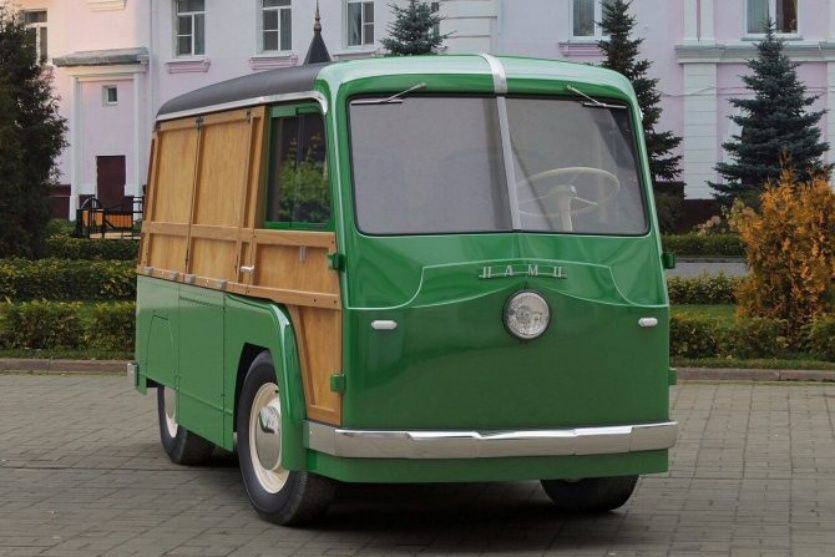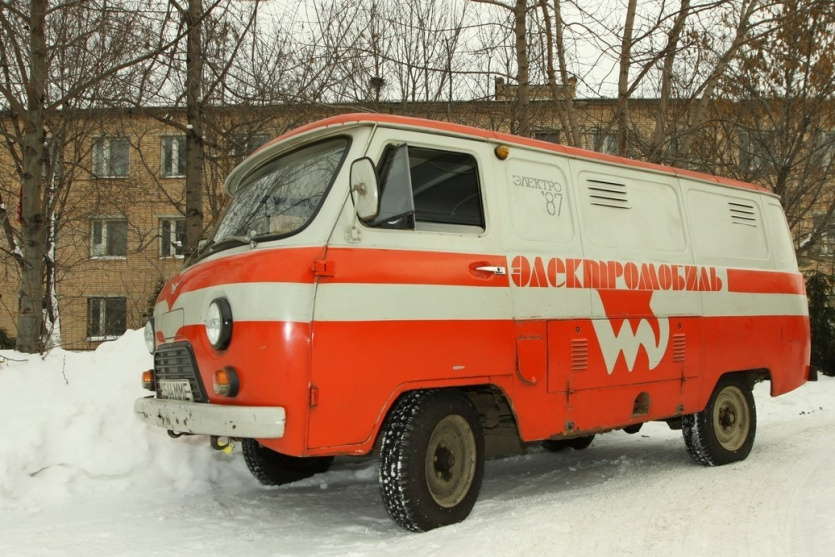Every year, electric cars are gaining more and more popularity both abroad and in Russia. Until recently, dozens of models of electric and hybrid models from all over the world could be purchased from Avito and from dealers (official and unofficial) from China, Japan, Germany, the Czech Republic, and the USA. Even little-known Indian brands have managed to stand out with just two electric cars.
Of course, the Russian auto industry meets with any of its represented countries quite difficult: evolution becomes more complicated, tortuous and not always clear to an outside observer. But it is almost impossible to imagine it without cars on alternative traction.
Yes, and serial collections can be dialed. There have been many events that have happened today.
1. Hybrid bus ZIS-154
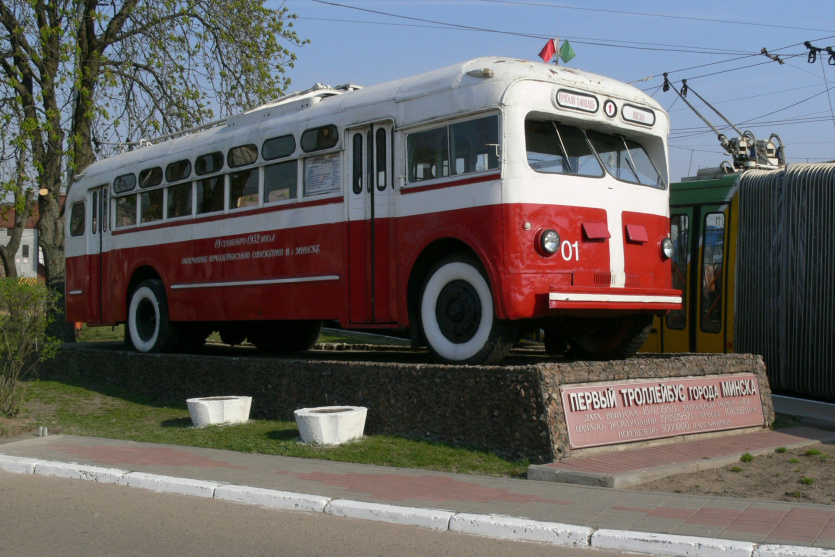
Unlike a number of designs that did not receive serial implementation, produced from 1947 to 1950, the ZIS-154 bus became an absolute hit. And its hybrid design largely contributed to this: a 110-horsepower YaAZ-204D diesel engine was stocked with a DC generator under the rear five-seater seat.
The traction electric motor fell under the breakdown of the body, transmitted torque to the rear drive axle through the cardan shaft. To change the direction, the travel switch served, the amount of traction on the given wheels is set automatically, without driver intervention.
Due to the unique power plant, the bus received incredible smoothness and driving comfort at that time. the allowable capacity is up to 60 people, the car has become very high for both drivers and passengers.
In addition, the bus (hybrid electric locomotive?) received an aluminum body (unheard of squandering for post-war civil engineering) and a carriage cabover layout. It is worth mentioning that all the thousands of issued copies were operated until the end of sixty, preserved bodies converted into trolleybuses, and even more?
2. LAZ-NAMI-750/751
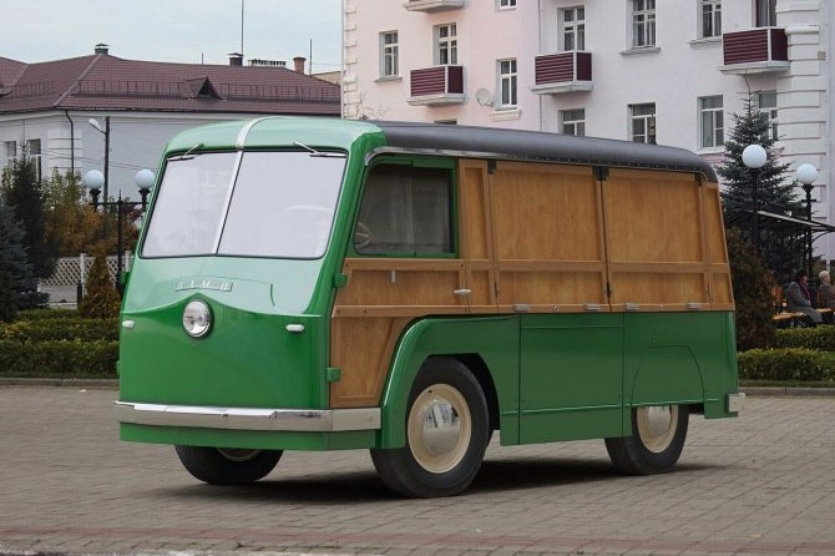
In 1948, the country’s main automotive design institute, NAMI, developed the NAMI-750 and NAMI-751 families of electric vehicles with a carrying capacity of 0.5 and 1.5 tons, respectively. Their small series, manufactured by the Lvov Bus Plant, was used for transportation in Moscow and Leningrad. Then 10 prototypes of electric vehicles manufactured and operated from 1952 to 1958. in Leningrad; they have also been found to carry mail cargo.
In addition to the propulsion system that was original for its time, the cars received many original solutions: the frame was made in the form of a truss, the body frame was made of a standard aluminum profile. In addition, the vans received two side lifting hatches on the right side, which were hidden under the roof.
The drive uses a non-standard and modern power supply scheme from two electric motors (2.85 kW and 4.0 kW for NAMI-750 and NAMI-751) through wheel gears. The power reserve is 55–70 km, and the highest speed is 30–36 km/h.
3. “ElectroLoaf” UAZ-3801
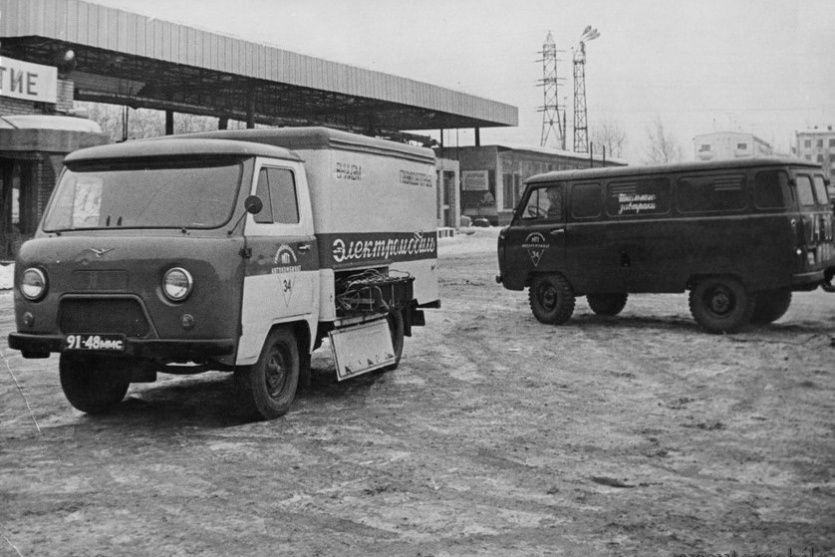
The Ulyanovsk Automobile Plant produced electric vehicles several times – most often on the basis of modifications to the well-known UAZ-451, popularly referred to as the “Loaf”. The first attempt was made in 1959 with the release of the UAZ-450EM to serve airports. Unfortunately, the car let down a two-section battery that requires direct current for charging – but it was replenished by 70% in just an hour, and the capacity reached 70 kilometers with a payload mass of no more than 500 kilograms.
The next model, UAZ-451MI, was released in 1977. The carrying capacity has been preserved, the range on a single battery charge has increased to 80 kilometers. This charge of charge from the household power grid experiences a current, which greatly simplifies the release. Alas, the short range closed this project as well.
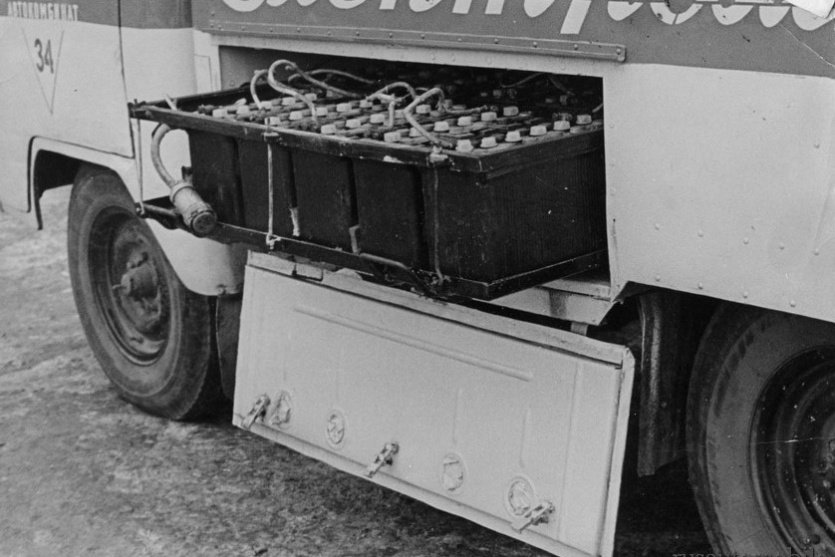
A year later, the UAZ-3801 electric car was released, the carrying capacity of which was increased to 800 kg. That’s just a tolerable growth of no more than 50 kilometers and only the use of a recuperation measurement system to increase the range to 75 kilometers.
exceptional maintainability paid off. Now, if the range was even higher, it could have been a hit.
4. Delivery van VAZ-2801
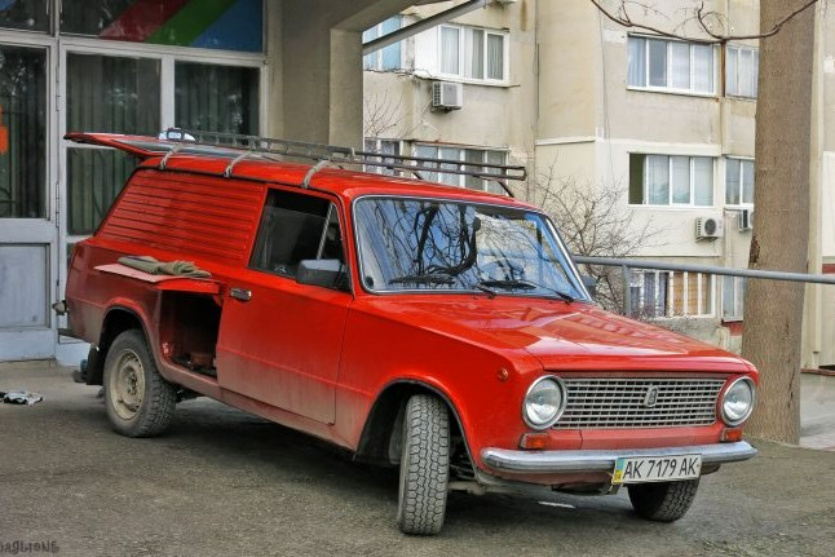
The Volga Automobile Plant in Togliatti joined the design of electric cars of the eighties, releasing a van based on the VAZ-2102 station wagon. The model received a 25-kilowatt engine – and did not take place, since the body could not withstand 380 kilograms of batteries.
The next modification received a frame perspective and an already familiar perspective – so they managed to work all over the country, mainly in urban distribution work, and received good reviews. However, I expected otherwise and was not worth it: the car almost did not differ from a similar delivery truck with a gasoline engine.
the maximum growth speed of the Zhiguli reached 87 km / h, and the cruising range – 110 km.
5. Compact minibus RAF-2203
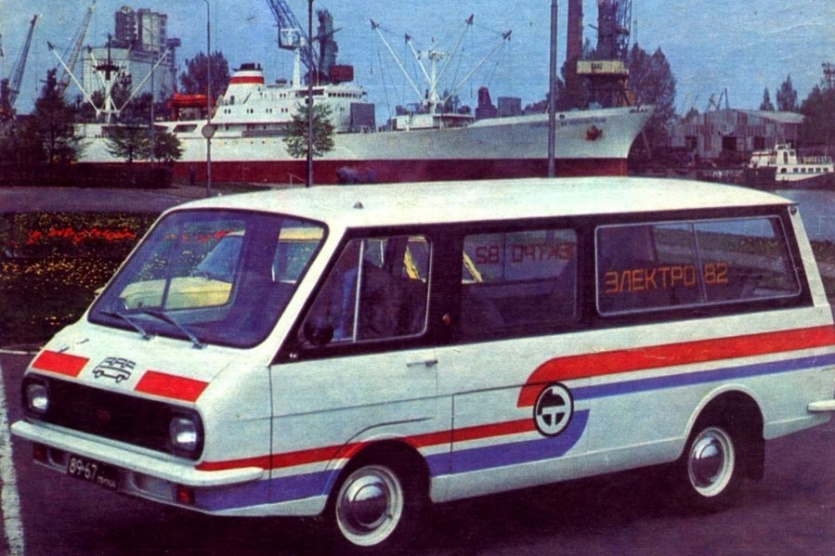
The Jelgava Automobile Plant also began producing electric vehicles, presenting a batch of RAF-2203 minibuses in 1976. Equipped with 23 kW engines, up to 9 people were transported and reached speeds of up to 60 km / h. In the rear of the body there was a sealed compartment for batteries, the engine used one – classic, on alternating current. The undercarriage was inherited from more common enterprise models.
Unfortunately, the cruising range did not exceed 70 kilometers, so it was impossible to use them for their intended purpose, and the electric RAFs had to be solved with solar panels and sent to support the 1980 Olympics, which he himself, after being transferred to carry passenger traffic.
At the Olympics, these cars met with another small-scale brainchild of the Jelgava Automobile Plant – RAF-2910, made specifically for judges of marathons and other cross-country competitions. They differed from the original “2203” in doors with closing side doors, a swivel seat and interior baffle, and no roof panels.
And now let’s move on to serial freedom electric vehicles. We consider this a “bonus” part of the selection.
6. Budget electric Lada Ellada
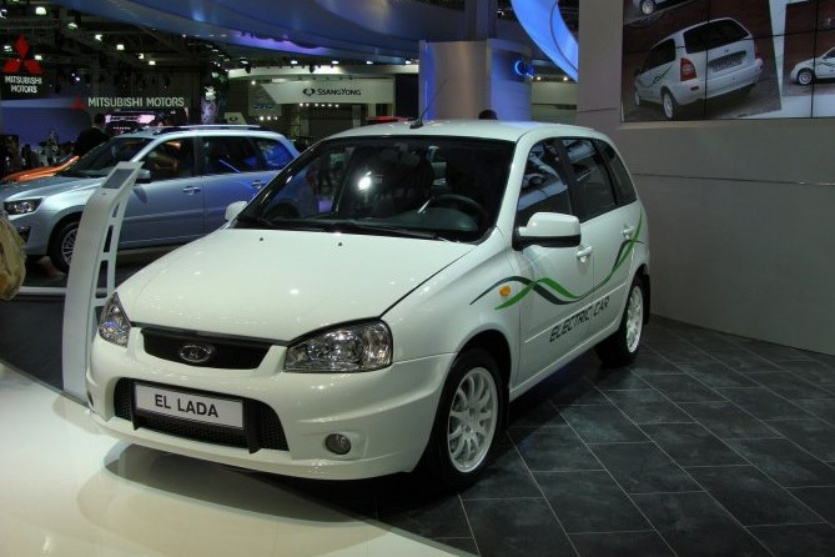
In the troubled nineties, Russian car factories managed to produce only concepts and piece models of electric vehicles. Everything changed only in 2013, when AvtoVAZ won a pilot batch of Lada Ellada electric cars based on the regular Kalina.
The car received an electric motor similar in parameters to the native gasoline one – the same 60 kW and a torque of 275 Nm. Not surprisingly, the quality of the chassis has not changed: up to a maximum height of 18 seconds, the maximum speed does not exceed 130 km / h. But the power reserve does not exceed 100 kilometers, and it takes 8 hours to recharge.
The project was launched as a private order, but the administration of the Stavropol Territory that issued it bought out only five electric cars. The rest quickly dispersed throughout the country and are still found on the roads.
The repeated series were not implemented due to the modest parameters of the car, which could no longer compete with foreign hybrids and electric vehicles.
7. City sedan Lada Vesta EV
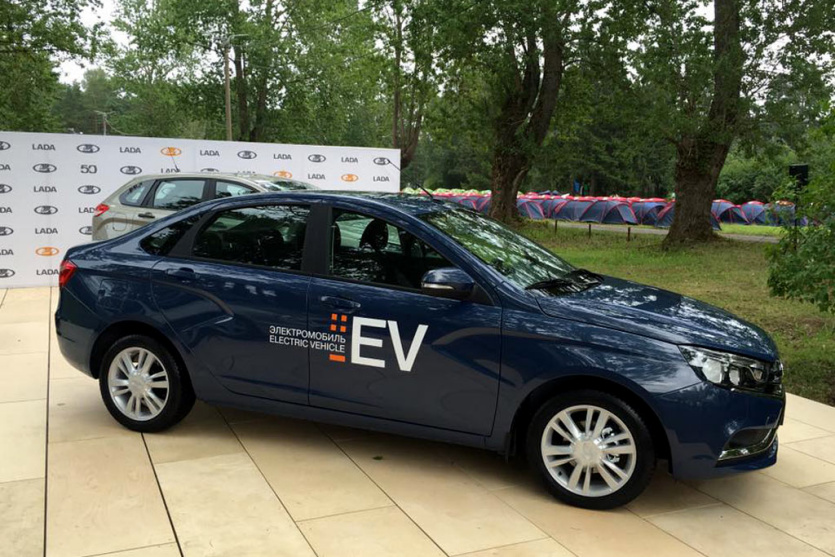
The next electric vehicle of the Togliatti Automobile Plant was the Lada Vesta EV sedan announced in 2021. The electric motor, inherited from the Lada Hellas, is installed on an updated base.
The elapsed time was not in vain: unlike the progenitor, it took about 15 seconds to accelerate the EV to “hundreds”, and the maximum speed dropped to 140 km / h. The power reserve has increased to 150 km, but it takes 9 hours to fully charge.
The model appeared at dealers at the end of 2021 in a stylish blue exterior. The price that did not occur in the event of occurrence, but came after recognition, inevitably deprived Togliatti of the original and quite in demand (if the reason was that the price would remain unchanged).
8. City Truck EVM Pro
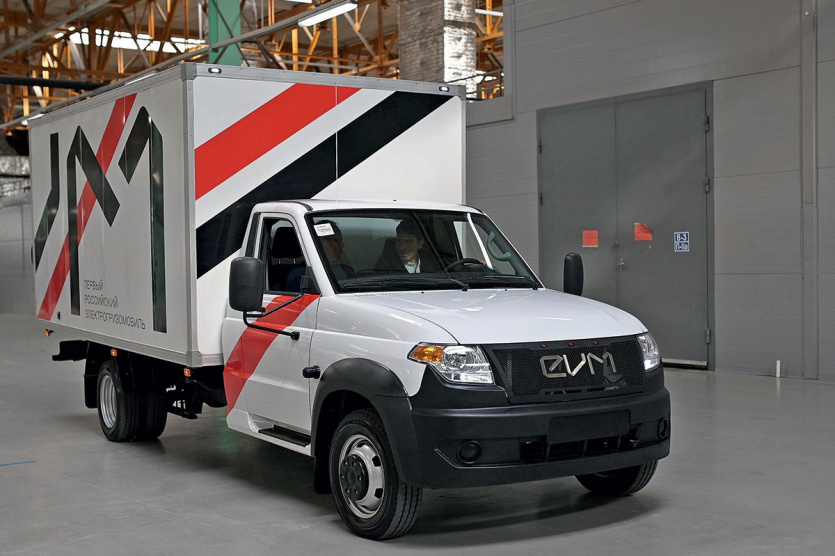
The hybrid EVM Pro was created on the basis of the UAZ Profi flatbed truck (no, this is not a Patriot, a different base is used) and was officially presented on February 22, 2022. It seems that today this is the most “live” project: employees independently visit power and on-board electronics, electric motors and plan to switch to Russian batteries by the end of the year.
The truck belongs to the most demanded class up to 3.5 tons with a payload of up to 1 ton.
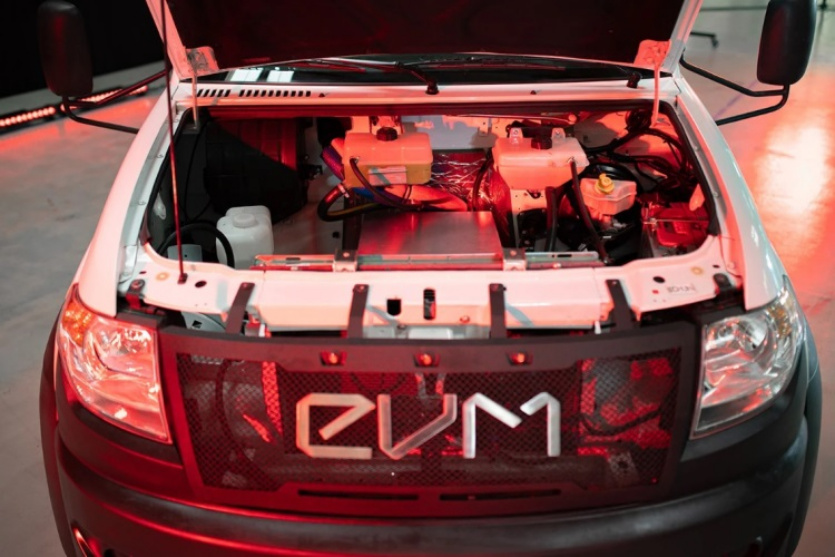
The hybrid powertrain is a 131 horsepower gasoline engine and a 126 horsepower electric motor. “ElectroProfi” can move in both fully electric and hybrid modes. The battery allows you to go one charge up to 74 kilometers, the cruising range on gasoline is 855 km.
Unfortunately, the Profi and Pickup gas power plants turned out to be more in demand among buyers. Nevertheless, mass production of the hybrid truck has been launched, and dealers have begun to collect orders.
9. Van and minibus GAZelle Next Electro
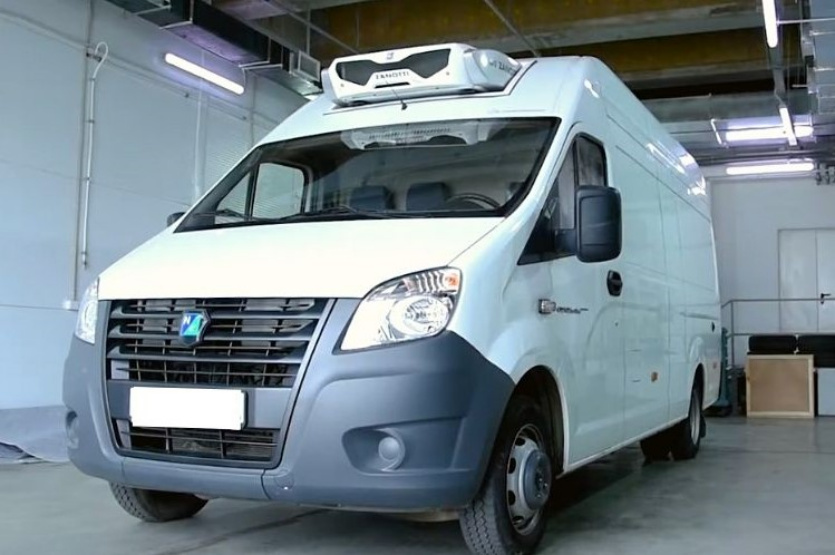
The first production model of a GAZ truck was created on the basis of the first generation NEXT in 2014 by the individual order of Rosseti. The small series was replaced by the second version, created in 2016. The updated minibus and van received the modifications necessary for serial assembly, but the plant did not find a suitable customer.
However, until recently, it was these cars that were available from local GAZ dealers, who, probably, were completely independently converted into service centers according to factory drawings.
10. Universal cargo platform GAZelle e-NN
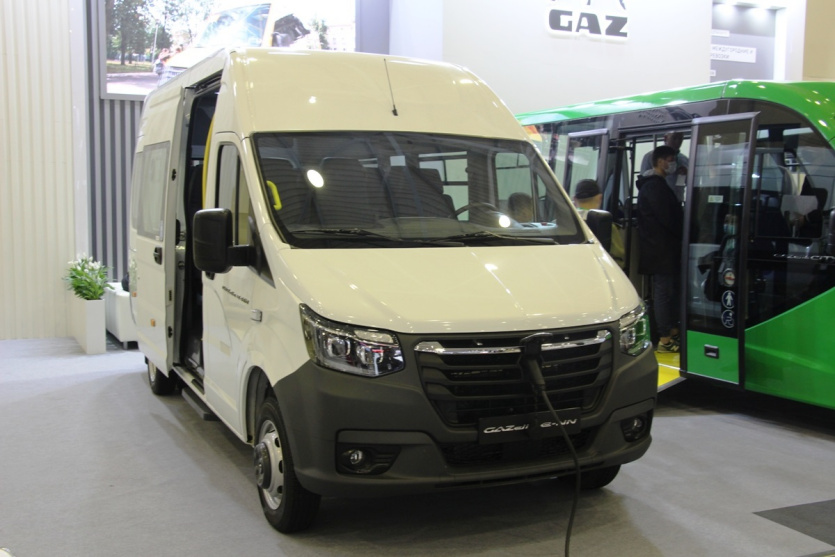
Needless to say, the experiment with NEXT kitchen equipment has gained enough popularity? Therefore, in the new generation of the platform called NN, an electrical modification appeared with its own index E-NN.
At the moment, a minibus for 17 people, a van and a platform for installing any of the lightweight Nizhny Novgorod bodies are already available for order.
This variant received a 100-kilowatt synchronous electric motor and Chinese lithium visibility for 100 km. There is a heavier option with an extended battery, the stock of which is twice as high. Given the capabilities of the modified UFP NEXT, for the development of scenarios and these characteristics are very good.
That’s just charging from a household network takes about 10-11 hours – and fast charging in an hour is provided, but requires a DC station.
Source: Iphones RU






